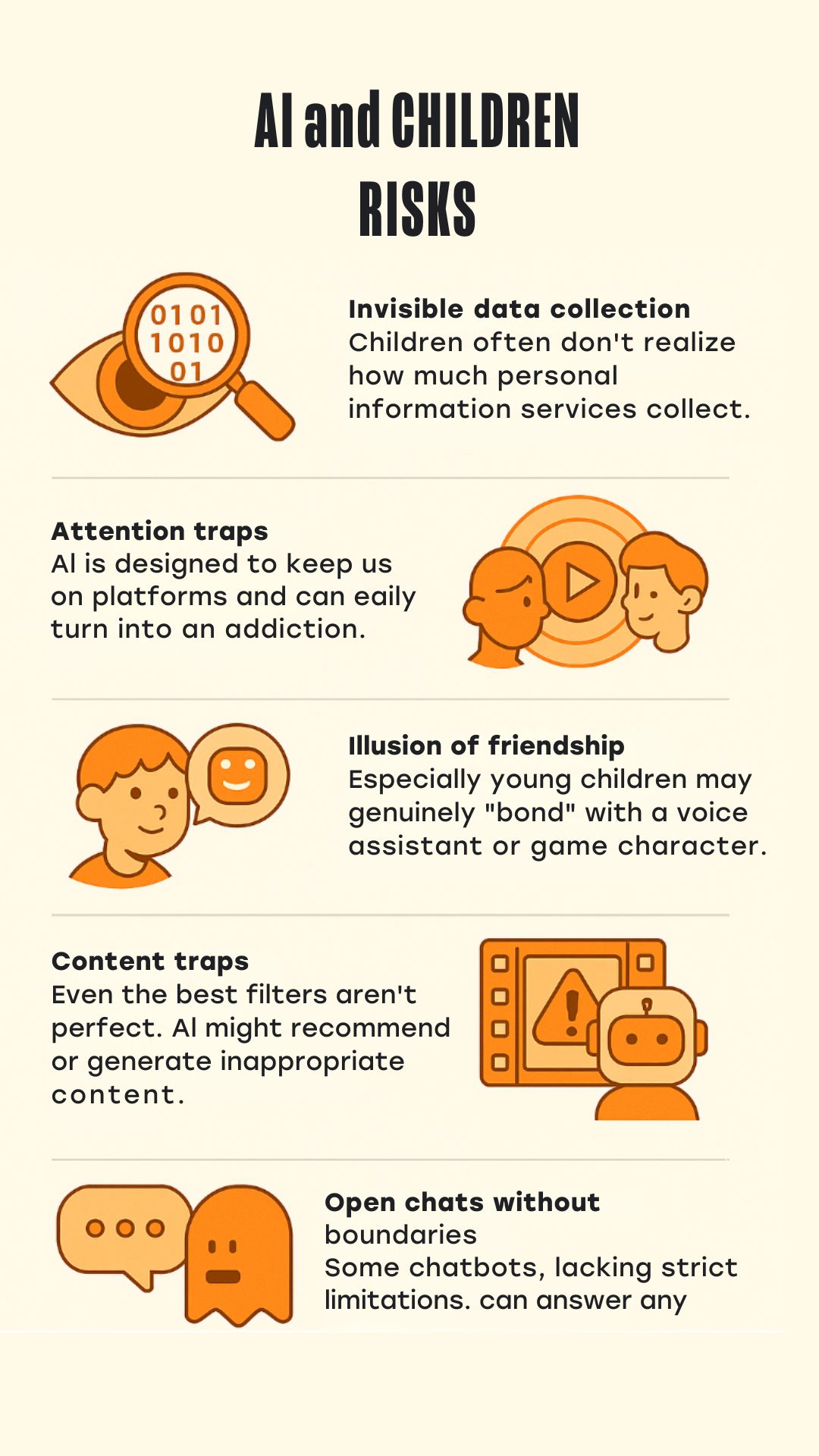If someone had told me a decade ago that my children would casually chat with smart speakers, request bedtime stories from them, or create fantastical images using algorithms, I would have laughed it off as pure science fiction.
But here we are. Artificial Intelligence (AI) is no longer a concept of the future—it’s our present. It has quietly, almost imperceptibly, but very confidently entered our children’s lives. This isn’t just the “internet” of our youth. It’s something more: YouTube and TikTok curating content specifically for them, voice assistants becoming conversational partners, educational apps adapting to their learning pace.
Our children are the first generation not merely using technology but growing up alongside AI. They will build careers, learn, form friendships, and play in a world where AI is woven into the very fabric of reality.
Ignoring it means turning a blind eye to immense opportunities. Blind trust is dangerous. But there’s no need to panic! The key lies with us—parents and educators. We can teach our children to use this powerful tool consciously and safely.
And I want to be your guide in this—not only as a digital expert and author of educational programs but also as a mother walking this path alongside you.
Welcome to the series “Children and AI”!
It doesn’t understand. It doesn’t feel. It doesn’t empathize. It’s a tool. Powerful, intelligent, but just a tool.
Because our children are already living in this world. They interact with algorithms intuitively—often without realizing it. How we prepare them now will determine whether they can:

Imagine AI as a super-capable but very peculiar student:

✔️ Become co-explorers: Use AI together! Create stories with ChatGPT, seek answers to children’s “why” questions, generate images. “Wow, look what came out! Why do you think AI drew it that way?” It’s the best way to learn, monitor, and discuss.
✔️ Activate the parental radar: YouTube Kids, Google Family Link, TikTok restrictions—these aren’t total control but reasonable safety boundaries. Set them up with your child, explaining “why.”
✔️ Choose platforms wisely: Khan Academy Kids, Scratch, Be Internet Awesome—prefer trusted educational resources designed specifically for children.
✔️Always talk: Make it a habit to ask, “What interesting thing did you learn with AI today? What surprised you? What seemed strange?” Discuss digital experiences as naturally as school days.
✔️ Teach skepticism: Repeat like a mantra: “AI can make mistakes. Even very smart and convincing ones.” Remind them that any information, especially from AI, needs to be double-checked. Critical thinking is the key skill for the future.
“Remember: if a bot says something strange, confusing, or unpleasant — come to me IMMEDIATELY. We’ll figure it out together. No secrets in such matters! No shame or fear.”
Tip: “When your child talks about a new AI game or video—ask: ‘What did you like about it? Why do you think this particular thing appeared in your feed?'”
Note: Don’t scold your child for curiosity—it’s better to search for answers together!
AI isn’t magic from a fairy tale. It’s not a monster from a horror movie. And it’s certainly not a replacement for us, the parents.
It’s just a very powerful tool. Like a hammer: it can build a house or break something valuable.
📌 We, the parents, are not mere spectators in this digital arena. We are the main navigators and coaches for our children.
Our attention, our willingness to learn alongside them, and our honest conversations determine whether AI becomes:
With our involvement, curiosity, and love—our children will succeed. I’m confident in that.
This is just the beginning of our conversation in the “Children and Artificial Intelligence” series! In upcoming materials:
Links to support communities—a place to share experiences, ask questions, and find answers among equally concerned parents.
AI is no longer tomorrow. It’s today. And together, we can help our children master it consciously, safely, and with maximum benefit for their amazing future.
[wpforms id=”1175″]